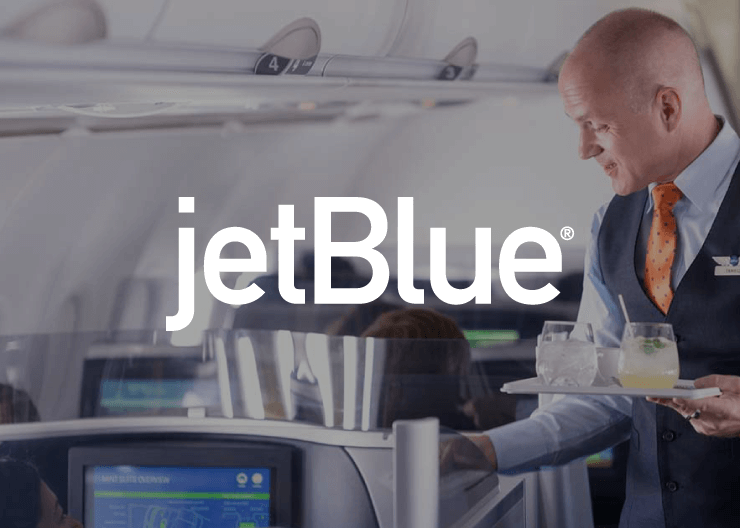What are sustainable competitive advantages?
A competitive advantage is by definition is when a brand uses its assets, its abilities, or its unique features to win out over its competitors. It’s when a company consistently outperforms its competition due to a specific attribute.
But the real question is: what are sustainable competitive advantages?
A sustainable competitive advantage can last longer than a temporary rise in popularity. It means building products, services, a brand, and a reputation that attracts consumers continually over time.
Free eBook: 2025 global consumer trends report
Examples of sustainable competitive advantages
The factors that play into a competitive advantage are numerous, and their sustainability can be greatly affected by external factors.
Unique products
Having a unique product or service can keep a company at the forefront of consumers’ minds – but this might only last as long as the competition doesn’t outperform the original. First mover advantage can only go so far as time goes on.
Renown for customer experience
Brand differentiation due to great customer service is frequently enough to sway consumers to a brand. Great customer service, quick issue resolution, and fast responses can put companies above the competition with better products. Of course, the high level of customer experience needs to be maintained over time for the competitive advantage to be sustainable.
A low-cost advantage
A company that can keep its operational and supply costs low can keep its prices low – and this can tempt consumers away from other providers. However, keeping costs low enough is a delicate balancing act between weathering supply chain and manufacturing price hikes and undercutting competitors.
Brand reputation
A brand that attracts its customers on the strength of its reputation alone is powerful – but it can be a fragile advantage if this reputation is not upheld. Committing to particular company values, monitoring brand reputation, and ensuring customers continue to be happy over time is necessary for sustaining this advantage.
Pricing power
A company that can raise its prices without disrupting its share of the market has pricing power. Companies that can leverage this as their competitive advantage have usually built a strong reputation that can withstand price increases. However, as mentioned before, brand reputation can be fragile without maintenance.
Corporate strategic assets
If a company has advantageous assets – such as patents for technology, intellectual property trademarks, or copyrights, for example – they can often hold a stronger position over competitors in the same industry. That being said, if competitors create new inventions that are more effective, these assets can end up being less important.
Products and services that can evolve
If a brand has products and services that can change with the needs of the market, rather than remaining static, they can outdo their competition more effectively over time. Additionally, new products on the same line can attract a loyal audience. Investing in this factor as a competitive advantage means considering product and service lines’ futures right from the beginning and planning ahead carefully.
A strong cash flow
Companies that have a strong cash flow have the power to make risky plays for market share – and can weather storms more effectively than their competitors. However, this can easily be depleted if brand, product, or service issues become numerous and costly.
Why is having a sustainable competitive advantage important?
Understanding what your customers want and need – and what you’ll need to have to meet those requirements – is how you can set yourself apart from your competitors.
The benefits of a competitive advantage
- Growth: An edge above the competition means you can attract greater numbers of new customers – and grow exponentially as a result.
- Market share: With a competitive advantage, a brand can take more of the market share.
- Increased customer lifetime value: Providing something unique that customers can’t find elsewhere – from products to customer experience – means that your audience stays with you longer.
How to use market research to create a sustainable competitive advantage
Market research can be an incredibly powerful tool for identifying and developing your sustainable competitive advantage. In fact, just using data and analytics to inform your strategy can put you ahead.
According to McKinsey’s research, companies that include data and analytics as part of their strategy are three times more likely to state that their initiatives have added at least 20% to their earnings before interest and taxes (EBIT) over the prior three years. Investing in data and analytics for market research can put your company ahead of the curve and reap financial rewards.
Our ultimate guide to conducting market research can give you the tools you need to get started – and help you to narrow down how to attract a greater market share.
However, the points below contextualize how to use market research specifically for a sustainable competitive advantage.
The key questions to answer
To create a company characteristic that your competitors can’t match, it’s important to nail down the following details:
- Benefits: What benefits does your advantage afford your customers? In other words, what is the real value of it?
- Target market/target market needs: Who will be attracted to your competitive advantage, and what do you need to provide them to do so?
- Competition: Who are your competitors, and what do they offer that you don’t?
You can find out a lot of this information through market research. Feedback can help you to determine exactly what attracts your audience to you, how it is of value to them, and what more you can do to fulfill their needs. You can also understand why your customers choose you over your competitors.
Key factors to consider when carrying out market research
Important factors to consider include:
- Understanding what metrics are useful: collecting metrics such as CSAT scores is useful, but understanding what drives these scores is more helpful for understanding where you have a competitive advantage.
- Choose your methods wisely: There are multiple ways to collect feedback – but not all of them will be suitable for all customers at all times.
- Use an always-on approach: A one-time study might help you develop an initial competitive advantage, but for a sustainable competitive advantage, you’ll need to take the pulse of your audience continually over time.
- Automating your research: Your team can only do so much themselves – and it’s impossible to see all customer comments, social posts, emails, and customer service calls all at once without help. Using a customer experience management tool can help you to see trends and competitive advantages with information gathered from all facets of your business.
Free eBook: 2024 global consumer trends report
Customer experience as a sustainable advantage
One competitive advantage that can weather the test of time is customer experience.
No matter the change in purchasing power, lower-cost alternatives, or a saturated market, providing your customers with an unforgettable customer experience can give you the edge over competitors.
The statistics bear this theory out. In our research, we’ve found that:
- 95% percent of customers who believe a company’s CX to be “very good” are likely to recommend
- 94% of customers are “very likely” to repurchase if customer experience has been rated as “very good”
- CX that is perceived as “very good” leads 90% of customers to say they are “very likely” to trust that business
- 64% of customers who rate CX as “very good” are very likely to try new products and services immediately after it’s introduced
Many businesses can’t compete for price or corporate assets – but they can compete in customer experience. Renowned for customer service builds stronger brand loyalty and can be a more stable foundation for a competitive advantage than one based on costs. It can win customers over again and again – and draw them away from the competition.
Examples of customer experience as a sustainable competitive advantage
Below are some examples from our case studies on how focusing on customer experience can set you up against the competition.
JetBlue

Jetblue believed its competitive advantage was its free baggage offer – but after studying flight data and feedback on its customers on pricing, it found that customers instead preferred cheaper ticket prices.
By taking feedback into account – and using Qualtrics’ solutions for data gathering – JetBlue was able to improve customer experience and develop it into a sustainable competitive advantage.
BMW

Already renowned for their products, BMW has a history of having the competitive advantage for automotive performance. However, to increase its repurchase and return service rates and outdo the competition, it needed to reevaluate its CX program.
Overhauling its customer experience management program meant that in Northern Europe, it could collate every customer comment, respond within 24 hours, and commit to issue resolution within 5 days. The level of exemplary customer experience BMW was able to achieve – alongside its innovative products – has given it a more sustainable competitive advantage.
Engie

In the highly saturated market of low-carbon energy solution providers, Engie needs to constantly create adaptive solutions and grow to be competitive.
Using market research, the company was able to get feedback at speed and adapt its customer experience rapidly for improved outcomes and a sustainable competitive advantage.
Free eBook: 2025 global consumer trends report